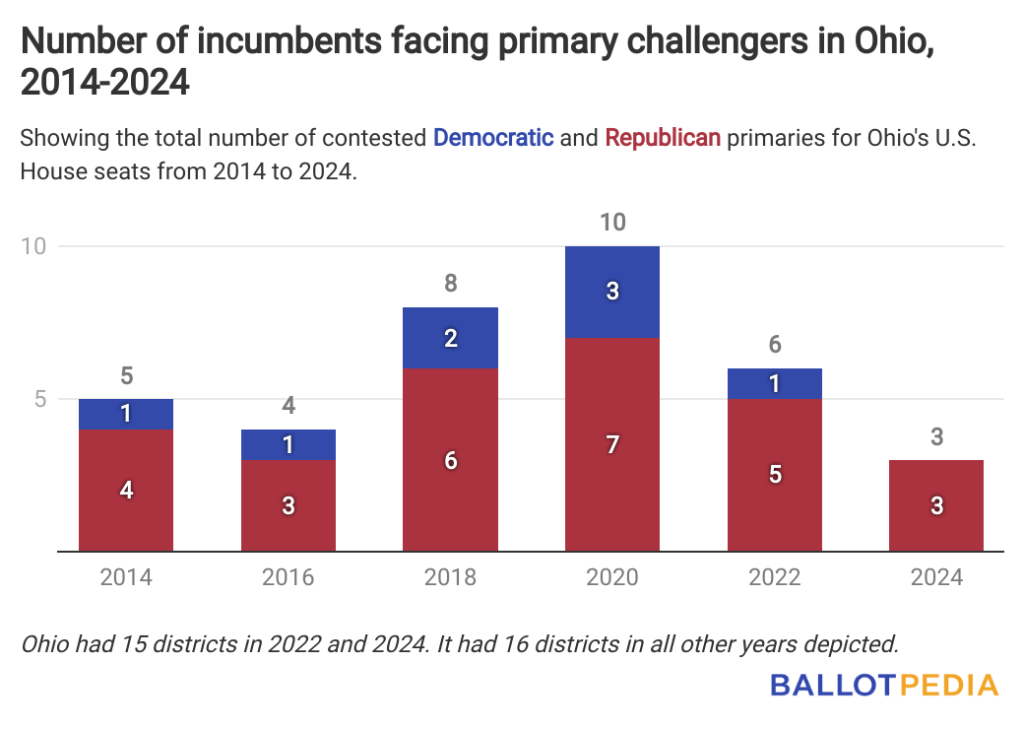This year's filing deadline for candidates running for Congress in Ohio was Dec. 20, 2023.
Seventy candidates are running for Ohio's 15 U.S. House districts, including 28 Democrats and 42 Republicans. That's 4.7 candidates per district, the most since 2018. In 2022, the first election after the number of Congressional districts in Ohio decreased from 16 to 15 following the 2020 census, 4.5 candidates ran.
In 2020, when the state still had 16 Congressional districts, 4.2 candidates filed per district. In 2018, 5.1 candidates filed.
Here are some other highlights from this year's filings:
- The total number of candidates running for the U.S. House in 2024 is also higher than any other year this decade besides 2018, when 82 candidates ran.
- Two districts—the 2nd and the 6th—are open, meaning no incumbents are running. That’s more than in 2022, when only one district was open, and 2020, when none were.
- Rep. Bill Johnson (R), the incumbent in the 6th District, resigned on Jan. 21 to assume the presidency of Youngstown State University. A special election to fill Johnson’s seat will take place on June 11.
- Rep. Brad Wenstrup (R), the incumbent in the 2nd district, is retiring from public office.
- Eleven candidates—one Democrat and 10 Republicans—are running to replace Wenstrup in the 2nd District, the most candidates running in a district this year.
- Fourteen primaries—six Democratic and eight Republican—are contested this year. That’s the fewest contested primaries since 2016, when 10 were. Between 2014 and 2022, an average of 17 primaries were contested.
- Three incumbents are facing primary challengers this year, a decade-low. The three incumbents—Reps. Bob Latta (5th), Warren Davidson (8th), and David Joyce (14th)—are Republican.

- Democratic and Republican candidates filed to run in all districts, meaning none are guaranteed to either party.
Ohio, alongside Illinois, is one of two states holding primaries on March 19.
In Ohio, the candidate with the highest number of votes wins the primary, even if they did not win an outright majority of votes cast.


